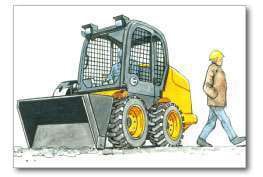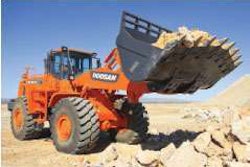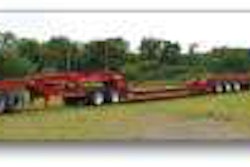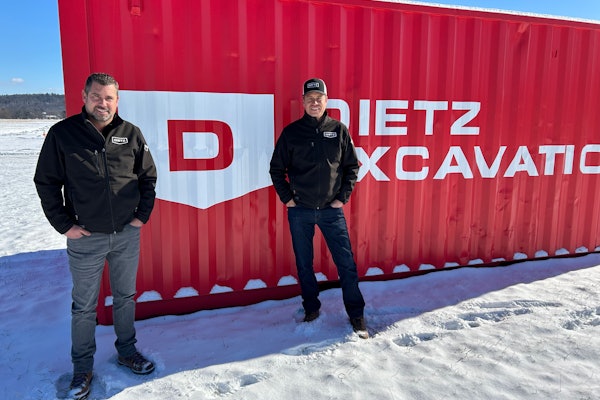In Harm’s Way
Avert danger by knowing where moving equipment is at all times

The bottom line: A post-accident investigation determined the skid steer operator thought the victim was inside the trailer and had not seen him walk behind the skid steer. Although the company had a written safety program, there was no formalized equipment training program. The investigation also found that employees had failed to wear safety vests.
Alert and aware
When you’re working around equipment that is in motion, always remain alert. Knowing what is in front of, behind you, beside you and above you is the best way to stay safe. Additionally, your employer will provide additional protection for you. Ask your foreman about the following:
Barriers – If you’re working on a fixed worksite or in the yard, concrete barriers should be in place to separate machines from commonly-used walkways. Portable barriers are also helpful, as they are generally brightly colored and provide high visibility to both operators and workers on foot. Avoid walking on the wrong side of the barrier.
High-visibility clothing – The American National Standards Institute has a hi-vis guideline that, when properly enforced, will increase the likelihood of an equipment operator seeing you. Ask your foreman to provide you with a high-visibility vest.
Clearance policy – Your employer should have a policy in place that dictates you maintain a safe distance from mobile equipment and use designated pathways. Learn this policy and follow it. Avoid unapproved pathways.
Training programs – Your comprehensive training program on heavy equipment operation will include backing procedures. If you’re in the operator’s seat, use an assigned spotter to help you ensure your path is clear.
Backup alarms – The equipment you use will have an audible backup alarm or may have electronic sensors installed. If you’re on foot, keep your ears open for the sound of an alarm.
Information for this Safety Watch is from an accident report and the Center for Disease Control’s National Institute for Occupational Safety and Health Fatality Assessment and Control Evaluation Program. It is meant for general information only.












